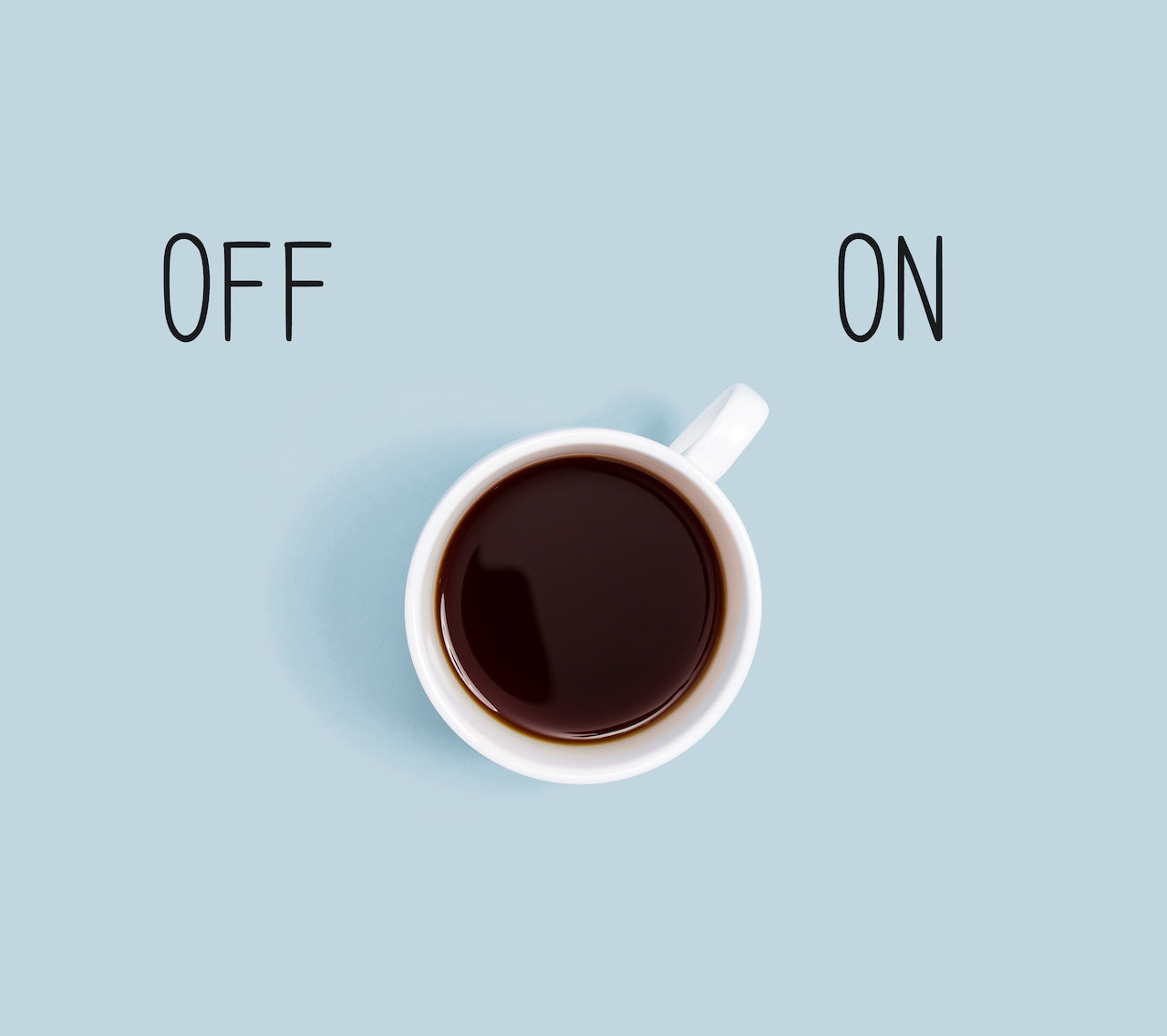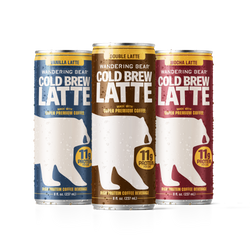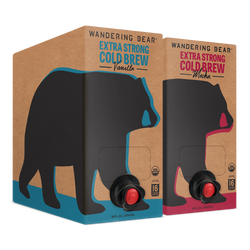Coffee and Caffeine 101

Updated: August 15, 2023
When coffee first entered the history books, the first thing people noticed was the energy boost. According to some tales, a ninth-century Ethiopian farmer first noticed it when he saw his goats buzzing with energy after eating a few wild coffee berries.
These days, it’s still the first thing we notice (and let’s be honest—the thing we love most).
Coffee (and caffeine) have grown to be our favorite morning boosters. About 90% of all Americans consume some form of caffeine every single day. But many of us don’t understand its effects any more than that farmer. All we know is, “consume coffee, feel a buzz.” But what’s going on that gives coffee its pep?
WHAT IS CAFFEINE, ANYWAY?
It’s a psychoactive drug. No, really—science even says so: “Caffeine is the most widely used psychoactive substance in the world.” But that doesn’t mean it’s a bad thing.
Caffeine itself is technically a bitter, water-soluble, crystalline substance known as a purine. When humans consume it, caffeine goes into the stomach, quickly absorbing into the bloodstream. There, its solubility properties allow it to cross the blood-brain barrier, where it can block adenosine receptors, which are what makes us sleepy throughout the day.
It sounds like a lot of complicated chemistry. But in short, caffeine perks you up.
HOW MUCH CAFFEINE DOES COFFEE HAVE?
Here’s the thing about caffeine: it’s hard to get it from plants. Only about thirty plant species in the entire world are known to possess it.
But caffeine is present in coffee in abundance, a simple fact that changed the world of morning beverages. A roasting and brewing process meant people could consume a peppy amount of caffeine every day.
A typical cup of coffee has about 95 mg of caffeine. But that doesn’t make much sense without context, so here are some handy comparisons, with some stats from the Mayo Clinic:
- An 8-oz glass of cola: 22 mg
- Brewed black tea: 46 mg
- A shot of espresso: 64 mg
- Coffee with highest caffeine content: as high as 1,500 mg per cup
According to the Mayo Clinic, up to about 400 mg per day of caffeine is “safe for most adults.”
HOW MUCH CAFFEINE IS IN COLD BREW?
For those of us who need even more pep in our step than the typical hot cup of joe can provide, cold brew is often the answer for an extra jolt of caffeine.
But does cold brew actually have a higher caffeine content than hot coffee? Turns out there isn’t a super straightforward answer here—especially since factors like serving size, grind size, and brewing time all impact caffeine content in any cup of coffee.
But how does your typical cold brew compare to hot coffee when it comes to your much-needed energy boost? Let’s get into some science.
Higher temperatures extract more caffeine from the coffee grounds. That means the piping hot water you use for your traditional drip coffee technically provides you with more caffeine swirling around in your mug.
Cold water isn’t as effective at extracting things. That doesn’t only apply to caffeine, but also to flavors. For that reason, cold brew is made with a higher ratio of coffee grinds to ensure your chilly beverage actually tastes like coffee and not just diluted bean water.
So, cold brew uses colder water but more coffee grinds. In many cases, those two things effectively cancel each other out making the caffeine content of your typical cold brew fairly comparable to a hot cup of coffee. Your typical cold brew has roughly 100 mg of caffeine per eight ounces, while hot coffee comes in at 95 mg—a difference you likely won’t even notice.
WHAT’S THE STRONGEST COLD BREW?
Does that mean you need to write off your beloved cold brew and resign yourself to a life of sluggishness? Absolutely not.
All of the above talked about your typical cold brew—but there are plenty of stronger cold brews out there specifically designed to give you the kick in the pants you’re craving. Some of the highest caffeine cold brews go all the way up to 300 mg of caffeine per cup.
A glass of our own extra strong cold brew has the caffeine content of two espresso shots (that’s about 150 mg per cup). It packs more of a punch than your traditional coffee, but not so much that you feel like you’re going to jitter right out of your own skin.
SO...WHAT IS DECAF COFFEE?
Peas and carrots, peanut butter and jelly, coffee and caffeine. If one of those doesn’t belong in the list of famous pairings, it’s actually coffee and caffeine. That’s because not everybody wants a major energy bump from their beloved morning beverage—decaffeinated coffee is actually extremely popular. On average, every American will drink about a quarter cup of it every day.
What is it? Decaf is coffee with as much caffeine removed as possible. The oldest technique is to use the water-soluble feature of caffeine against it. The “Swiss water” method soaks the beans in water until the caffeine comes out. Strain the coffee beans and voila: decaf.
This happens before the beans are roasted, which means you can still have the same flavor of coffee without the caffeine effects. The Mayo Clinic notes that this doesn’t completely remove caffeine—there may still be about 2 mg in it per cup. But it’s a negligible amount.
THE ENERGY-BOOSTING BENEFITS OF CAFFEINE
Ever since a few Ethiopian goats ate those east African coffee berries, the world has been enjoying the energy-boosting benefits of coffee.
Fortunately, we’ve improved on the recipe since then, as with our Cold Brew on Tap. It’s a ready-to-drink, smooth flavor for people who know about caffeine—and want some more of it.
W. Bear






